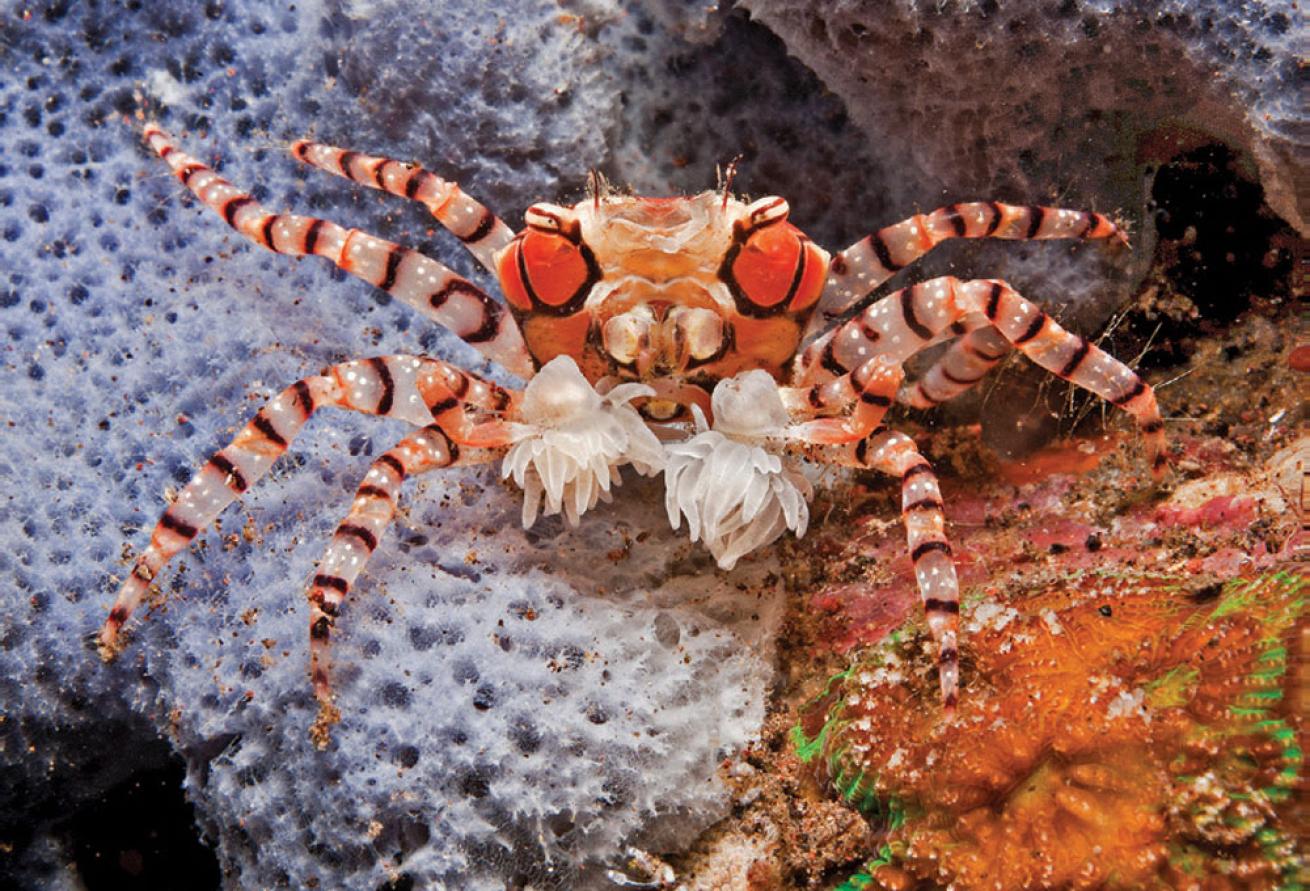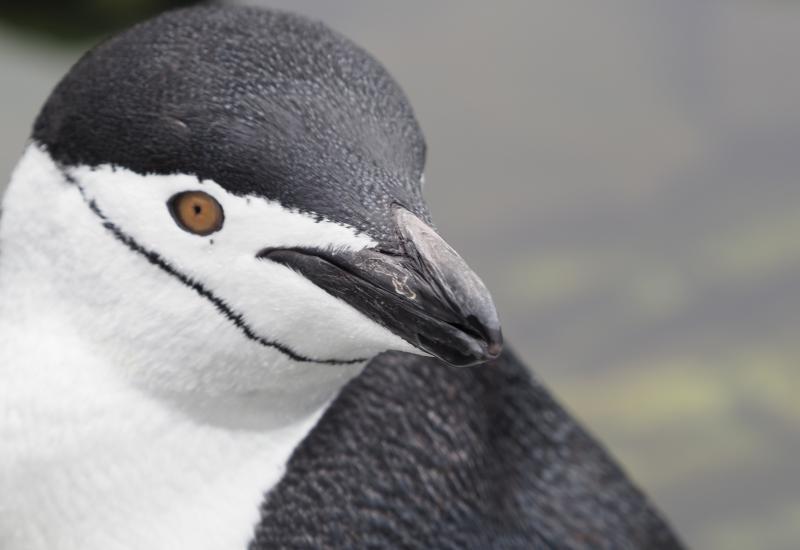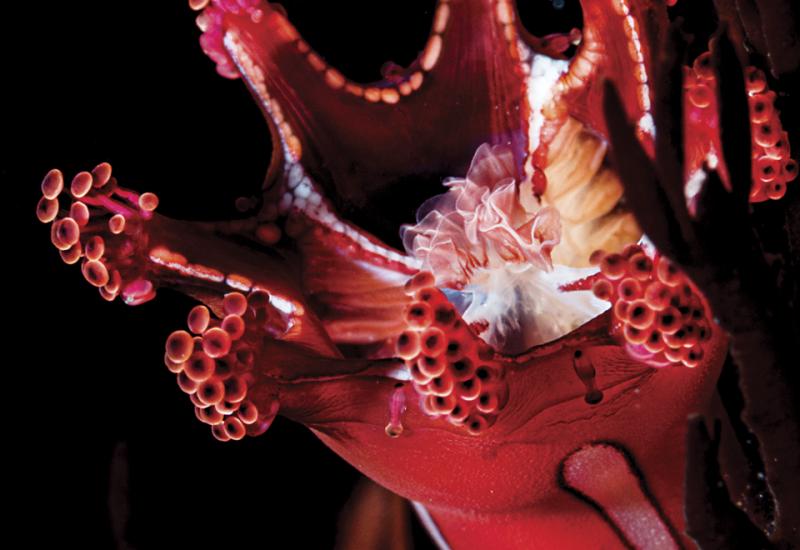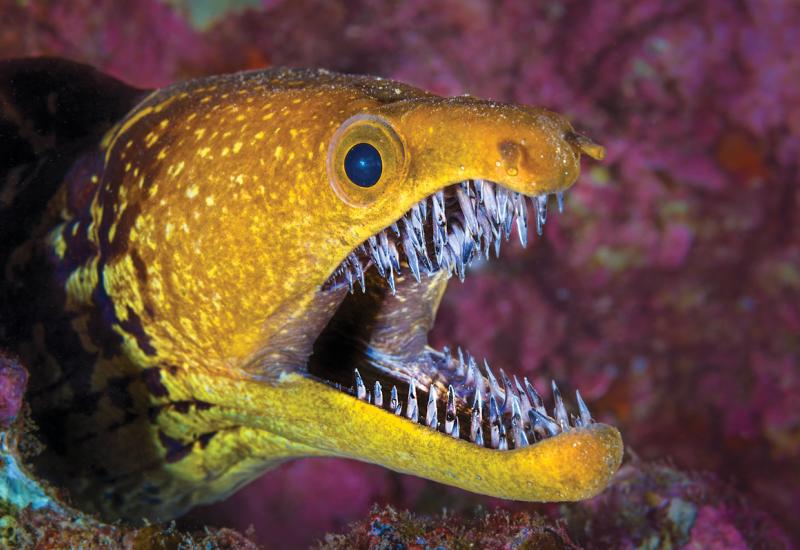Critter Hunt: Kidnapped!

Boxer Crab
Boxer crabs hold hostages to ensure dinner is promptly served.
Ned and Anna DeLoach
Cute, multihued boxer crabs certainly don’t seem like kidnappers, but a closer look reveals incriminating evidence — living anemones grasped tightly in each claw. It turns out the crabs, which spend the day hiding beneath rocks along shorelines in the Indo-West Pacific, depend on their hostages for gathering food as well as for protection.
This unusual form of symbiosis was labeled as “kleptoparasitism” — the theft of food — in a recent scientific paper. The authors studied the relationship using aquarium experimentations and observations. Unexpectedly, their research also revealed that the crabs intentionally starve their captives to keep them manageably small.
To feed, the crabs use their tiny victims like mops to pick up bits of food from their surroundings. The crabs quickly remove the particles with their walking eggs, leaving behind just enough scraps to keep their anemones alive but not enough for them to continue to grow — a novel form of kleptoparasitism. The researchers likened the behavior to “bonsai” — retarding a plant’s growth by manipulation. When anemones are removed from crabs and allowed to live on their own, they grow rapidly, increasing their size by as much as 250 percent, and also changing color and shape.
It generally takes a lot of rock-turning to find a boxer crab. With the help of our dive guide at Tulamben — a well-known dive destination in Bali — we were able to beat the odds. He knew exactly where a pair lived and was able to uncover one in a matter of minutes. Exposed, the crab wielded its pair of anemones like miniature boxing gloves, appearing to throw a series of left and right jabs. Afterward the guide carefully turned the rock back over, returning the little pugilist to its rightful place.
More Critter Hunt Videos:

Ned and Anna DeLoachBoxer crabs hold hostages to ensure dinner is promptly served.
Cute, multihued boxer crabs certainly don’t seem like kidnappers, but a closer look reveals incriminating evidence — living anemones grasped tightly in each claw. It turns out the crabs, which spend the day hiding beneath rocks along shorelines in the Indo-West Pacific, depend on their hostages for gathering food as well as for protection.
This unusual form of symbiosis was labeled as “kleptoparasitism” — the theft of food — in a recent scientific paper. The authors studied the relationship using aquarium experimentations and observations. Unexpectedly, their research also revealed that the crabs intentionally starve their captives to keep them manageably small.
To feed, the crabs use their tiny victims like mops to pick up bits of food from their surroundings. The crabs quickly remove the particles with their walking eggs, leaving behind just enough scraps to keep their anemones alive but not enough for them to continue to grow — a novel form of kleptoparasitism. The researchers likened the behavior to “bonsai” — retarding a plant’s growth by manipulation. When anemones are removed from crabs and allowed to live on their own, they grow rapidly, increasing their size by as much as 250 percent, and also changing color and shape.
It generally takes a lot of rock-turning to find a boxer crab. With the help of our dive guide at Tulamben — a well-known dive destination in Bali — we were able to beat the odds. He knew exactly where a pair lived and was able to uncover one in a matter of minutes. Exposed, the crab wielded its pair of anemones like miniature boxing gloves, appearing to throw a series of left and right jabs. Afterward the guide carefully turned the rock back over, returning the little pugilist to its rightful place.
More Critter Hunt Videos:










